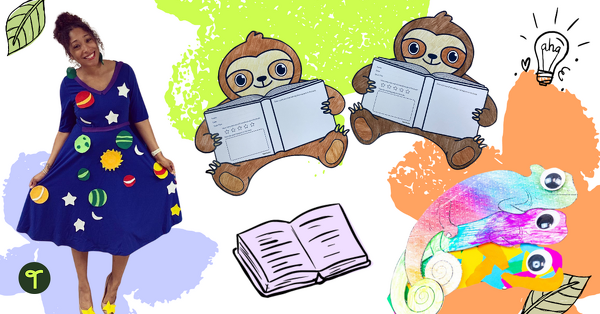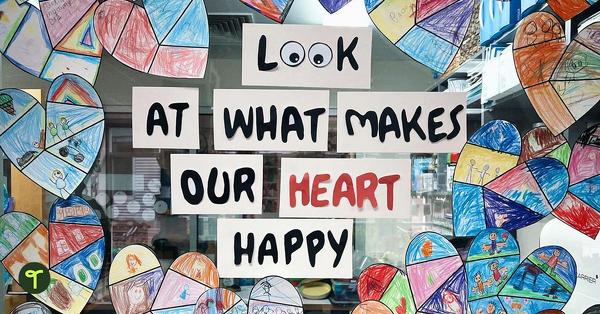You’ve probably heard at least a thing or two said about the science of reading. Maybe your state has even passed new laws calling forreading instruction to be research-basedand your district is making changes. Or maybe they’re using COVID funding to retrain teachers in your district on how to teach reading.
Some 18 states plus D.C. have pledged in recent months touse federal Covid fundson teacher training and changes in the way they teach reading. Meanwhile, four different states — Connecticut, North Carolina, Tennessee, and Delaware — all added the science of reading to state laws in 2021.
So where should you fall on the science of reading’s phonics-based education or a whole language “balanced” literacy approach? And what does the science of reading have to do with it all? We took a look at some of the latest research to help you get up to speed on the latest in the decades-old reading wars and the best ways to help prepare your young readers to develop their literacy skills — whether they’re native English speakers or English language learners.

Shutterstock.com / Monkey Business Images
Download a freeScience of Reading Decoding Strategy Bookmark and Poster set.
What Is Balanced Literacy?
Opponents of the science of reading approach prefer what’s called balanced literacy. Its roots date back as far as the 1800s, when Horace Mann (often called the father of modern public education) railed against teaching students that letters represent sounds. Mann once called theletters of the alphabet“repulsive and soul-deadening to children,” and argued that children should be taught whole words over individual letters.
Over the years, literacy educators used various forms of this whole word or whole language approach, including theReading Recovery programthat swept the nation in the late 1980s. But it wasn’t until the late 1990s thatbalanced literacywas officially born, first implemented as such by the California Department of Education in an attempt to boost reading scores.
Researchers Irene Fountas and Gay Su Pinnell (best known for theirdevelopment of the guided reading strategy) describedbalanced literacyin their book Guided Reading: Good First Teaching for All Ages as a “philosophical orientation that assumes that reading and writing achievement are developed through instruction and support in multiple environments using various approaches that differ by level of teacher support and child control.”
Balanced literacy practices eschew sequential phonics education (although some phonics may be taught) and focus instead on a whole language approach to learning. Essentially, balanced literacy teachers teach students to use context and pictures as clues to help figure out words and phrases that they don’t understand. The approach is built around teaching students cues and strategies to support reading.
Science of Teaching Reading Meets the Law
Why is the science of reading the focus of so much attention? Flash back 20-some-odd years with us, will you? In 1997, Congress called upon the National Institute of Child Health and Human Development to convene a panel to study how American kids were being taught to read. At the time, education was in the midst of what was often dubbed areading war, and when theNational Reading Panel reportcame out three years later, the findings were clear: phonemic awareness and phonics instruction were crucial in helping students be successful readers — regardless of socio-economic status. A year later, then-President Bush made science-based reading instruction a mandate as part of the No Child Left Behind Act in order for schools to receive federal funding for literacy initiatives.
And nearly two decades later, state after state after state is moving to make the science of reading a requirement in order for school districts to receive state funding. Delaware, for example, is requiring reading teacher preparation programs to include research-based practices in their training, while theNorth Carolina science of teaching lawextends to how would-be teachers still in college be instructed.
How to Implement Science of Reading in Your Classroom
With more and more teachers facing changes in how they teach reading, we spoke with Clare Wood, a literacy specialist fromTiny Steps Make Big Strides, who wants to educate teachers about this research-based approach. Here’s some of her best expert advice for incorporating science-backed instruction methods into your teaching toolkit.
Know and Understand Literacy Terms
It’s often hard to keep track of all of the different literacy terms, especially those associated with teaching children to read. Having a solid understanding of these definitions will help you, as the teacher, weave them all together. Using these terms in class, as they are needed, can also help the children in your classroom.
- Phoneme– smallest unit of oral sound
- Grapheme– letter or letter string that represents a phoneme
- 中元音– the most common vowel sound, the unstressed vowel that can cause blending and segmenting issues — for example, the ‘uh’ at the end ofbutterandcolor
- Phonics– systematic instructions that involve teaching children the sound to symbol correspondence to help them read, write, and spell
- Phonological awareness– having an awareness of the sound properties of words (can be done with your eyes shut). This is an umbrella term for sound (phoneme) awareness, rhyming, alliteration, syllables, and onset and rime
- Phoneme awareness– a category of phonological awareness that is being aware of the individual sounds within words.
- Continuous letter sounds——听起来可以为多个秒往下说h as – ‘s’ or ‘m’
- Morphemes– smallest unit of meaning. For example, the word ‘cat’ is one morpheme and ‘cats’ is two morphemes (the ‘s’ at the end indicates there are more than one)
- Orthography– the correct spelling of words (from the Greek meaning ‘ortho’ correct or straight – graphy – writing)
- Orthographic mapping– the mental process we use to store words for automatic retrieval
See our favoritephoneme resourcesfor your science of reading instruction!
Spoken Language Sets the Foundation
Effective instruction starts with this knowledge as a base and explicitly teaches students how print relates to the speech they already know. From there, children need to be taught that letters represent speech sounds, they don’t make sounds.
“Children should be taught to say sounds clearly, precisely, and slowly. This, in turn, will help children to accurately segment and blend words as they learn to read words,” Wood says.

Shutterstock.com / Photographee.eu
Systematic, Explicit Instruction is Key
Having an already defined scope and sequence will help ensure continuity of practice. Of course, this is where having a whole school approach will ensure systematic, explicit teaching of literacy skills.
“The scope and sequence should start with a small set of letters that are used to build words from the beginning.” Wood advises.
As an example, she suggests beginning with individual sounds in a sequence such as (s,a,t,p,i,n,m,d,g,o,c,k,e,r,u,b,h,f,l,j,w,v,x,y,z,q). Many项目开始SATPINor similar because it yields the most words and has two continuous sounds to get students started with word building. She then suggests moving on to longer decodable words, then common digraphs, moving on to vowel and consonant sounds, and also incorporating prefixes, suffixes, and morphology.
Be Explicit About Blending and Segmenting
For primary learners, blending and segmenting need to be explicitly taught. Engaging children with activities such as using playdough to initially segment the word (push down on playdough for each sound), and then blend the sounds (roll the balls into one) are great to help with blending and segmenting.
Continuous blending is an effective way to teach children as it focuses on sounding out words with no stopping or pausing between sounds.
热心提示:If children struggle to blend words, concentrate on words that start with continuous sounds. Sounds you can hold such as ‘m’ and ‘s’. Other continuous sounds are f, l, n, r, s, v, z. These sounds can be held without distorting their sound.
Teach Decoding Strategies
Balanced literacy tends to focus on teaching children a handful of reading strategies that can be drawn upon when children get stuck on a word. These strategies may include:
- using the pictures for guidance,
- skipping over words and coming back to them
- guessing words based on the context of the text
- using the first letter of the word to help.
Research into the science of reading indicates these strategies may not be needed to help children become fluent readers.
“Reading is not a guessing game. Effective readers use their phonics knowledge to break down words to read.” Wood explains.
That’s not to say that teachers shouldn’t provide helpful strategies to help a child during reading if they get stuck on a word. We worked with Wood to create theseScience of Reading Decoding Strategy Bookmarksthat focus on decoding a word, rather than using other parts of a book to figure out a word.
Use Decodable Books
木头也强调了使用decod的重要性able texts with students so they feel empowered and confident as they will be able to truly read all words in the books.
“There are few primary students that could truly read ‘I have a crocodile’, ‘I have a giraffe’, ‘I have a bear’. There are far too many complex patterns going on,” she explains. “Decodable books work on a scope and sequence.”
Start With Letter Sets
Teaching letters in isolation — everything A one week, everything B the next — is not an effective way to build the segmenting and blending skills needed for fluency later on. Effective instruction uses sets of letters to build words from the beginning.
Word building is an active process that engages all learners. As students actively participate inword-building activities, they are building their skills of blending and segmenting sounds, and this develops great word attack skills.

Rework Sight Word Lists
Many schools usehigh-frequency or sight word liststo support young children’s reading development. These lists can often be divided into two categories – those that are easily decoded using initial sounds, for example –and,at,it,can,andup,and those that have irregular spellings such assaidandthe.
To break this down even further, Wood explains why you may want to review your sight word teaching methods through the lens of science of reading research.
“We do not learn whole words,” she notes. “We learn the letters and letter strings that correspond to our speech sounds. If the words on high-frequency lists were taught through the scope and sequence, students would be able to read far more words than the first hundred words by the end of their first year.”
There are some words that come up all the time in the first year that students do need to remember, e.g., the, is, was, of, and so. If students encountered these in dictation activities and by the teacher modeling how the letters and sounds correspond, there is a far more likely chance that all students would be able to recall these words faster.
Keep English Language Learners in Mind
Do you have English language learners in your classroom? There isn’t a ton of science on teaching reading to multi-lingual students, but there is still value to using the practices developed around the science of reading with these students. Remember that phonics vary from language to language, and a child who spoke Spanish first has to make an extra jump from understanding that “c-a-t” means “cat” to connecting “cat” to “gata” from their native language. They may have decoded the word, but they may still struggle with comprehension. Work on making connections and using examples from students’ backgrounds, and build on oral language skills in order to then build comprehension.





